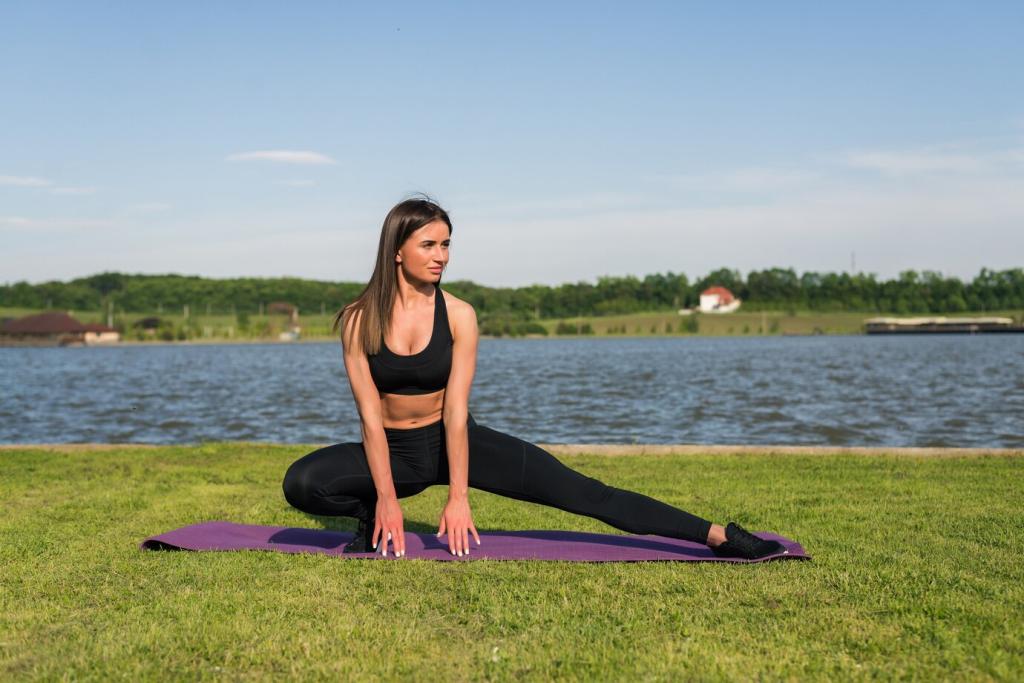
Beginner's Guide to Running: Start Strong, Smile Often
Today’s chosen theme: Beginner’s Guide to Running. Welcome! This friendly kick-off shows you how to take your first steps with confidence, curiosity, and consistency—so you can fall in love with running, one easy mile at a time.
Lacing Up: Choosing Your First Pair of Running Shoes
01
Look for a thumb’s width of space at the toe, a snug heel, and a midfoot that feels secure yet not constricting. A reader, Maya, avoided blisters entirely by sizing up half a size—comfort changed everything.
02
If possible, get a quick gait check on a treadmill or record a short video from behind. Noticing overpronation or a neutral stride helps you choose cushioning and support wisely, preventing aches that derail early momentum.
03
You do not need the most expensive shoe; you need a reliable, well-reviewed model that fits. Last season’s versions often cost less while offering nearly identical tech. Ask questions below and swap beginner-friendly recommendations.


The First Week Plan: A Walk–Run Method That Works
Try 1 minute running, 2 minutes walking, repeated 10 times. It feels achievable, and you will finish with energy to spare. One beginner, Leo, felt unstoppable after day three because he finally ended a workout smiling.
The First Week Plan: A Walk–Run Method That Works
If you can chat in full sentences, your pace is right for building aerobic fitness. Gasping means slow down. Beginners often gain more by being patient—easy effort today sets up stronger, happier runs tomorrow.
Relaxed Posture With a Gentle Forward Lean
Imagine a string lifting your crown, shoulders soft, and a tiny lean from the ankles. Keep hands unclenched, thumbs resting lightly. When Ella relaxed her jaw, her stride smoothed instantly and her side stitch vanished.
Find a Comfortable Cadence Sweet Spot
Many beginners feel better around 165–175 steps per minute, but treat it as a guide, not a rule. Shorter, quicker steps reduce overstriding. Try syncing to a playlist and share your favorite starter songs below.
Breathe Deep: Nose-In, Mouth-Out Rhythm
Try a steady pattern—two steps inhale, two steps exhale. Expand your belly, not just your chest. When nerves rise, count breaths to five cycles. Comment if breath counting calms you, and we will send variations.
Pre-Run Snack Simplicity
For runs under an hour, try a banana, half a bagel with peanut butter, or yogurt and honey. Test timing—30 to 60 minutes pre-run works for most. What pre-run bite keeps you feeling light yet ready?
Hydration Without Overdoing It
Sip water regularly through the day and a small glass 20 minutes before running. On hot days, add a pinch of electrolytes. New runner Amir finally ditched headaches by sipping slowly instead of chugging afterward.
Recovery Fuel That Loves Your Legs
Within an hour, aim for protein and carbs—chocolate milk, eggs and toast, or a smoothie with fruit and yogurt. This simple habit speeds adaptation, and you will notice fresher legs on your next beginner session.
Injury Prevention: Warm-Ups, Cool-Downs, and Strength
Marching lunges, leg swings, high knees, and ankle rolls wake up joints without fatigue. New runners often skip this and feel sluggish. Warm up, then your first minutes feel smoother and your confidence rises immediately.
Injury Prevention: Warm-Ups, Cool-Downs, and Strength
Walk five minutes, then gently stretch calves, quads, and hips. Deep breaths signal your system to recover. Sam avoided tight shins entirely after adding this ritual. Share your favorite cooldown song to keep it consistent.

Mindset and Motivation: Build a Habit You Love
Call Yourself a Runner From Day One
If you run, you are a runner—no pace requirement. Name it, and your choices follow. Sofia taped a note on her door: “Today I run.” That small sentence pulled her outside on rainy mornings.

Join our mailing list
